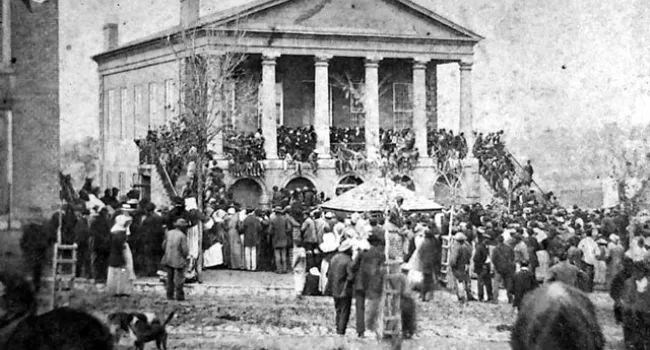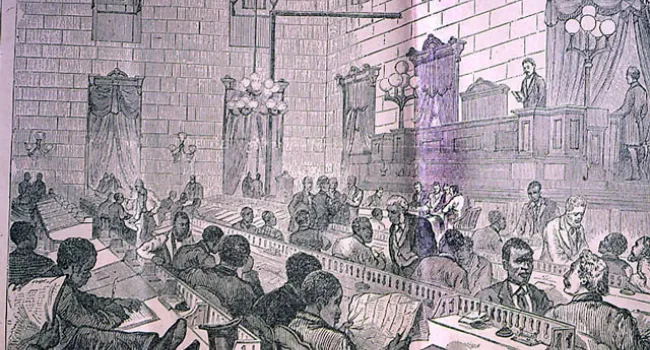
In the aftermath of the 1876 election, Wade Hampton III stood on the steps of the State House on November 28, 1876, urging his followers to avoid acts of violence. Hampton and the Democrats elected to the legislature set up a rival government that became known as the "Wallace House" in Carolina Hall, in the block between Main and Sumter Streets along Washington and Hampton Streets in Columbia. Until April 1877, South Carolina had two governments. The outcome of this drama was determined by national political forces. The election for the presidency was also under dispute. When a compromise was reached in the spring of 1877 that included the promise that all federal troops would be withdrawn from the South, Republican President Rutherford B. Hayes was inaugurated, and removed the United States troops whose presence had supported the Chamberlain government. It collapsed, the governor's office was transferred to Wade Hampton III, and the Democratic candidates for election to the disputed seats from Edgefield and Laurens Counties were seated in the legislature. Thus ended Radical Reconstruction in South Carolina, with Hampton and his followers becoming known as "Redeemers" of the state, protecting it from corruption and misrule. This photograph of the Wade Hampton III Monument on the State House grounds was taken around 1910.
Courtesy of the South Caroliniana Library.
Standards
- This indicator was designed to encourage inquiry into how new state and federal Progressive legislation affected individuals and businesses in South Carolina and the U.S. The indicator was also designed to promote inquiry into the new perspectives that emerged regarding social and political change.
- This indicator was developed to encourage inquiry into the significant causes of World War I and the factors leading to U.S. involvement. This indicator was also developed to promote inquiry into the effects of the war, to include its impact on the homefront, migration patterns, and continued foreign policy debates.
- This indicator was developed to encourage inquiry into how the former planter class, African Americans, women, and others adjusted to, gained, lost, and/or regained position and status during Reconstruction. This indicator was also written to foster inquiry into how South Carolina worked with a stronger federal government and expanding international markets.





